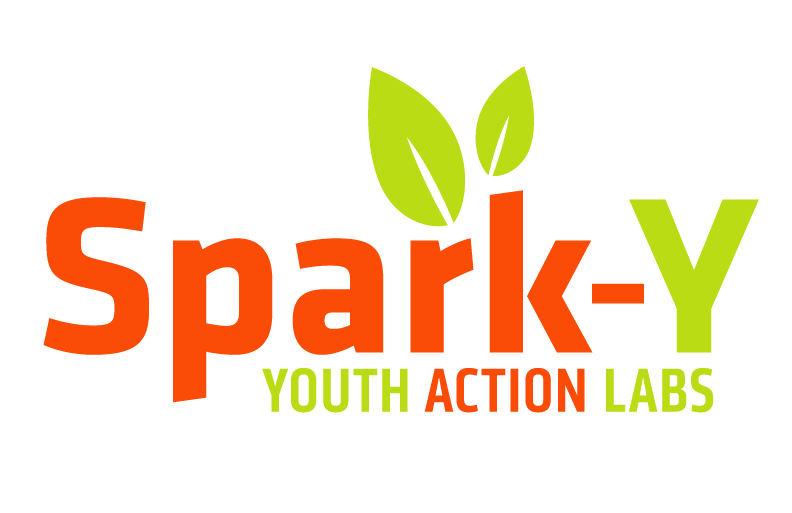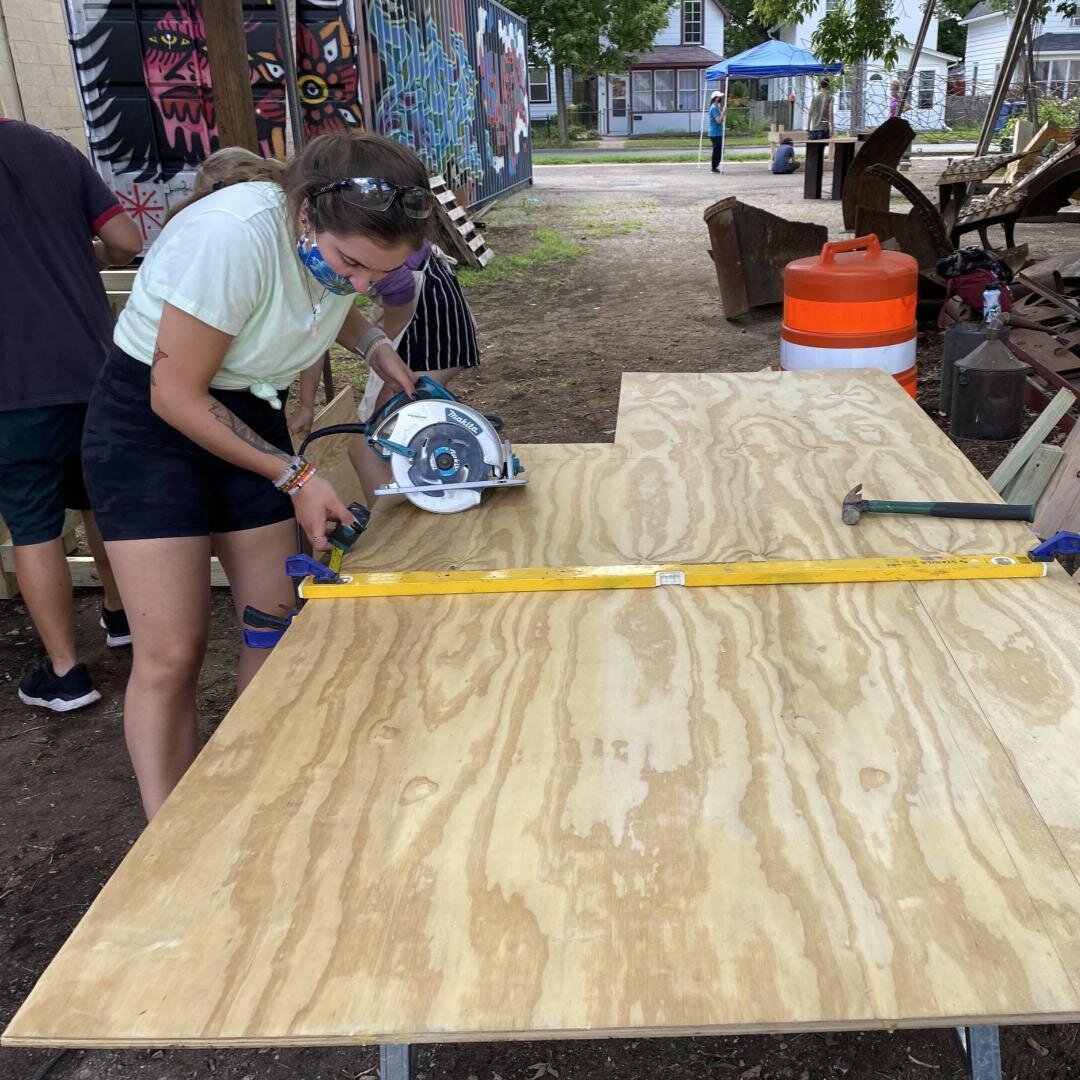In mid June, fresh out of quarantine, Spark-Y hired a reduced number of summer interns, from their usual thirty to nine, in order to proceed with their annual summer sustainability internship amidst Covid-19. The annual internship is a pillar of their mission for engaging youth in a real-world setting. Spark-Y is a local nonprofit rooted in empowering youth and educating our community about sustainability and entrepreneurship. After doing masked get-to-know yous, us interns split into two teams each focusing on our different sustainable community projects. Our team of four interns was then paired with our advisor, Ry Sorensen, who gave us the rundown on our summer project. We would be building a themed educational kiosk that will sit in the Minneapolis Public Schools Culinary and Wellness Center garden. Its aim is to engage students on field trips and passing community members. The MPS garden is 2,200 square feet full of food, used either in the free summer meal program offered to Minneapolis students or for staff and local community members to take home and use in their very own houses! Originally, we were the Traveling Team but then renamed ourselves the Soil Siblings after deciding on soil quality to be the theme of our six week long kiosk build.
Spark-Y Headquarters Urban Agriculture Lab (UAL)
Minneapolis Public Schools Culinary & Wellness Services Center
We worked on the process of building, designing, and budgeting for our soil kiosk over the course of six weeks. Caitlin Barnhart, the Spark-Y sustainability director and MPS Culinary and Wellness Center coordinator, gave us the task of creating this project from scratch. We were given a brief outline of what was expected: a kiosk was to be made by the end of our seven-week journey for the purpose of educating youth and community members at the MPS garden. We dove in immediately and by week two had started to brainstorm, plan, and design. There were five different topics we could choose from for the kiosk: soil, recycling, water, energy, and food waste. We chose soil because we thought it would be the best connection and education tool to teach the community about the garden. We spent countless hours looking online for design inspiration, drawing out our ideas, and finalizing what we wanted to create. Paige focused on budgeting, Ellie focused on community coordination, Nora focused on design, and Eliza focused on outreach. We were able to get a lot of (much needed) help in terms of design, construction, and budgeting from our advisor, Ryland Sorensen. Ry is the sustainable systems coordinator and was once a Spark-Y summer intern as well! Our team couldn’t have finished our project without his help and knowledge. By the end of the third week, we finished our design proposal with three different, initial ideas: the garden bar, the trail head kiosk, and the walk through. After meeting with Caitlin, we decided on the trail head kiosk design and added some modifications and alterations. After another challenging week of designing, budgeting, and planning, we finally settled on our design:
Kiosk Final Design
We originally started with an overall budget of $1,600, giving us around $200-$400 for our kiosk materials. The original plan was for four kiosks to be built at this site, but we worked with the Spark-Y staff and decided it would be best to stick to two. This gave us more flexibility with the budget. Another intern, Chue Yang, connected with Spark-Y through an internship program with the University of Minnesota. He was in charge of building the second kiosk as a mirror image of ours, except with a different topic. Chue was a great partner to work with throughout this process and we’re glad we got the chance to work with him. By the fourth week, we began building! All of us were so excited to finally see our hard work coming together.
By week five, our kiosk was starting to come together. We worked diligently on the construction and infographic pieces. Eliza and Ellie handled the infographic sections by designing the information and visual elements in a graphic design system called Canva. They worked hard on presenting the information we collected on soil in a creative, interactive, and informative way. Our goal was to adhere to an audience of children/teenagers that attend Minneapolis Public Schools and would be visiting the MPS garden on field trips. The kiosks can also appeal to community members that happen to be passing through the garden. We collected as much information as we could on soil, with focus on these four questions: what is soil? Where does soil come from? What does soil do? And finally, what can you do to help our community’s soil?
Throughout this process of building, designing, and budgeting, we were able to stick to our original timeline we created in order to complete our project by week 6 and put in the final touches during the last week before the open house. In the last week we were able to attach the roof, screw on the two back pieces of plywood, stick on the infographics, and finish the mosaic. We decided to create a mosaic on the front piece of plywood of our kiosk of an image of a garden made out of glass. We believe that our project is the perfect blend of Science, Technology, Engineering, Art, and Math (STEAM).
The Completed Kiosk
We came a long way over the course of our internship experience. All four of us learned so much in terms of what it’s like to take a project from start to finish. We all gained skills in project management, budgeting, teamwork/communication, construction, sustainable practices, and so much more. We hit many road bumps along the way and we faced struggles in clear and straightforward communication, staying focused and on track, and unexpected problems during construction. But through it all this project was not your typical work project and it was fun and exciting to be a part of it. We all loved our time spent together collaborating on this project with Ry and being able to see it completely finished during our open house was extremely fulfilling and gratifying.
With gratitude, Paige, Ellie, Nora, and Eliza









